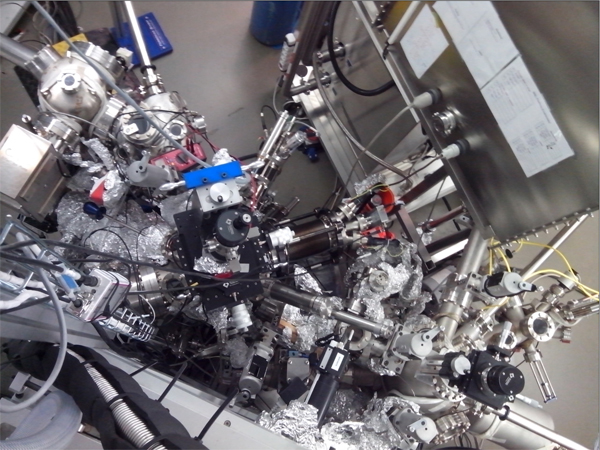Experiments performed at DEIMOS beamline by a team of researchers of the Italian National Research Councils (CNR), the University of Manchester and French CNRS found that a single molecule may well work as magnetic refrigerator on its own. This is possible by exploiting the magnetic properties of special class of molecules, i.e. paramagnetic organometallic compounds that show a particular behavior, known as magnetocaloric effect (MCE), which makes them excellent refrigerants at cryogenic temperatures. “besides the curiosity”- explains the researcher- “this opens the way to miniaturize devices –such as highly sensitive detectors of electromagnetic waves- on one chip where a thin layer of such a molecule can be used to cool down the whole chip.” Their results are published in Advanced Materials.
Research in nanotechnology aims at scaling down the size of systems and devices while maintaining interesting performances down to few nanometers, that is approx. 10000 times smaller than a human hair. Along this line, researchers are currently investigating how small a refrigerator can be.
The magnetocaloric effect
The magnetocaloric effect occurs by performing a particular thermodynamic cycle, called adiabatic1 demagnetization, which exploits the variation of entropy due to the application and subsequent adiabatic removal of an external magnetic field that induce a temperature decrease. The magnetocaloric effect is quantified by the change in entropy per unit mass: although this effect occurs in many magnetic materials, only in a few cases the entropy change is large enough to make magnetic materials usable as refrigerants in practice. Molecular nanomagnets, to exhibit a strong magnetocaloric effect, must be characterized by a ground state with high spin and low entropy, should have a low magnetic anisotropy which facilitates the polarization in the presence of a magnetic field, and also must present an excess of entropy resulting from the presence of low-lying excited spin states. To optimize cooling performances in working conditions, the molecular mass should be small for a given change in magnetic entropy.
A layer of molecular iron clusters
In the experiments performed at SOLEIL, an ultra-thin layer of molecular iron clusters, namelly Fe14 (bta)6, have been deposited on substrates and its magnetic cycle has been studied by using polarized X-ray radiation. The substrates used were gold or graphite (HOPG, Highly Ordered Pyrolytic Graphite). The samples were produced by evaporation deposition in ultra-high-vacuum, or from liquid solutions having as solvents ethanol, dichloromethane (DCM) or acetone. The production of the substrates of the samples has required the controlled use of techniques such as sputtering and annealing, while for the analysis various surface techniques have been employed, including STM, XPS, AFM, FTIR, TGA, DSC and MALDI. In particular, the use of synchrotron radiation allowed, for the first time, to directly observe huge magnetocaloric effect at the level of a single molecule and to establish that cooperative effects, like long range order which is dominant in conventional magnetic refrigerants, play only a minor role in this case.
1- Adiabatic: an adiabatic process is a process occurring without exchange of heat of a system with its environment.

In situ preparation and characterization chambers on DEIMOS beamline: STM (at variable temperature from 50K to 500K), Low Energy Electron Diffraction, Auger, electron beam evaporators, Knudsen cells, effusion cells for organics, Ion sputtering, oven (1000°C), Glove Box.
